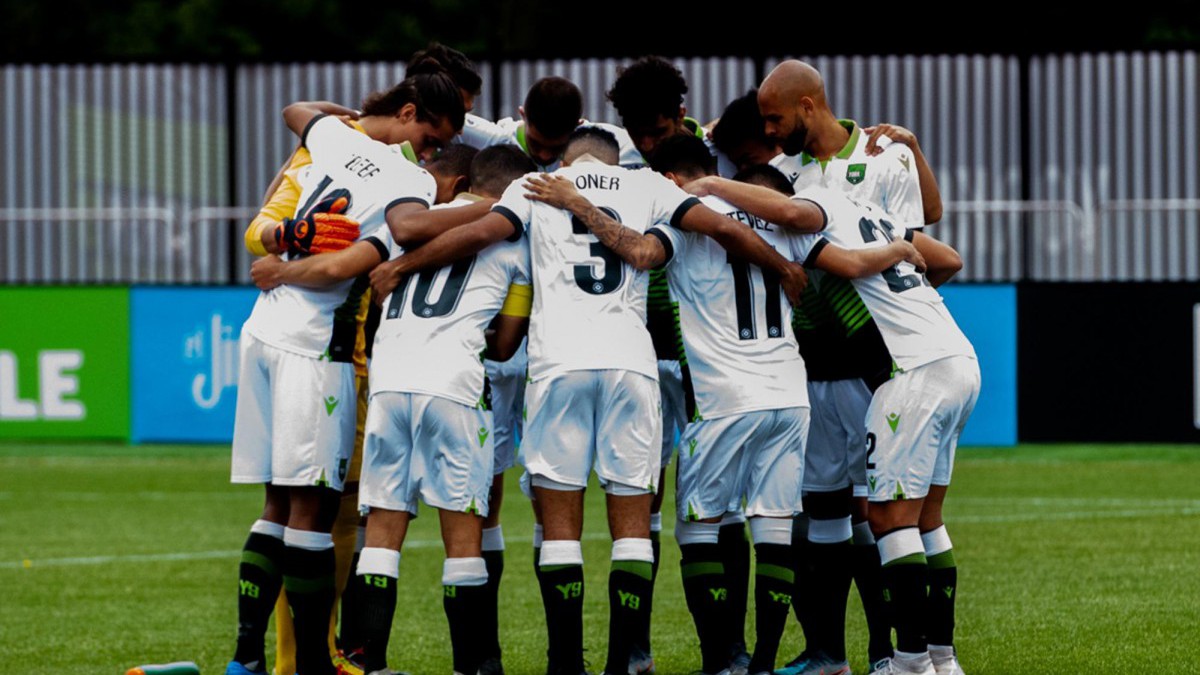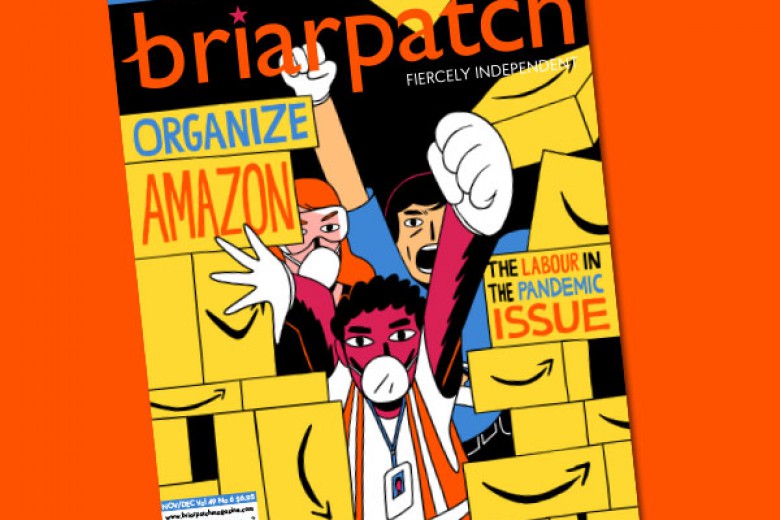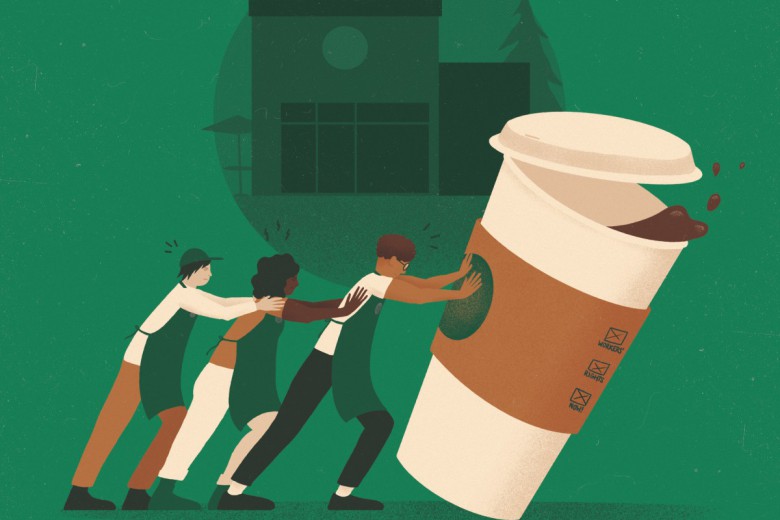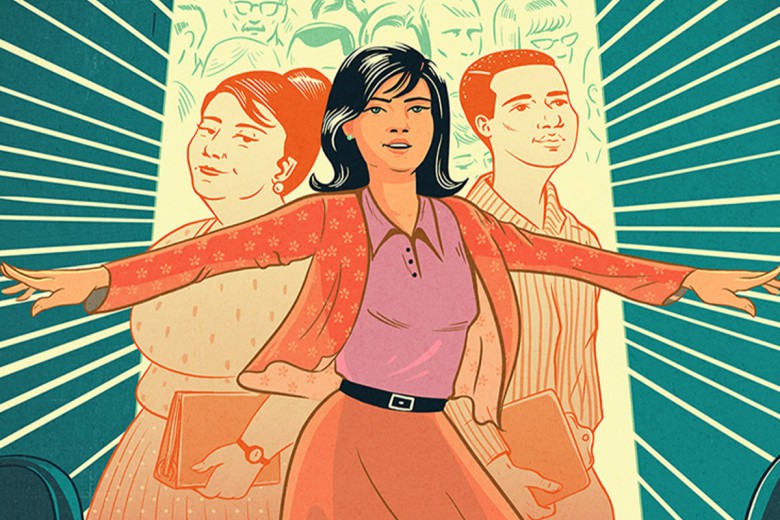When the Canadian Premier League (CanPL) first launched in 2019, it was met with excitement and acclaim. The start-up men’s professional soccer league was part of an unprecedented media deal worth $200 million over 10 years, saw promising match attendance in the debut season, and broadcast matches nationally through the CBC. In 2020, the league grew to eight teams and, despite the pandemic, successfully hosted a tournament in Charlottetown that was broadcast internationally. But beyond the glamour of the billboards and television broadcasts, CanPL’s players – the backbone of the whole league – have been struggling for respect and fair pay.
“We are the product, but we have no benefits. We have nothing.”
Being a professional athlete is both physically and emotionally strenuous. Despite training full time, travelling across the country for matches, and enduring constant scrutiny by media and coaches, CanPL players work for salaries far below a living wage. While CanPL roster rules are shrouded in secrecy, Miguel Angel Gil Marin, the majority owner of CanPL club Atlético Ottawa, let slip during a 2020 press conference that the salary cap for a team is set at $750,000. But most players are making far less: according to the Professional Footballers Association Canada (PFACan), teams are, on average, spending only $500,000 on player salaries. [1]
The situation becomes even more troubling when examining the pay for individual players. The majority of CanPL players earn less than $22,000 a year. This means CanPL players have the lowest salary average out of all the professional soccer leagues in the Global North. The average salary in CanPL also falls below that of leagues in poorer countries like Costa Rica and Honduras. A report by Duane Rollins revealed that younger players earn as little as $10,000 for a nine-month contract. Even established professionals and international players only earn between $18,000 and $35,000 per year. Former Toronto FC and Aalborg BK player Marco Reda remarked on Twitter that these figures are similar to what he received with his first contract at the now-defunct Toronto Lynx soccer team back in 1997. Factoring in inflation, this is akin to a 40 per cent wage cut.
A report by Duane Rollins revealed that younger players earn as little as $10,000 for a nine-month contract.
In an interview on Futbol Weekly, Carmine Issaco, who formerly coached CanPL team York United FC, decried the role of analytics in driving down salaries. In 2020, CanPL established a formal partnership with 21st Club, a company that assists teams with player recruitment through analysis of performance data. In addition to offering CanPL clubs access to a database of international players, a new rule requires clubs to sign at least four players recruited through 21st Club. Considering CanPL has only existed for two years, and most players have no performance data from their previous years playing in semi-professional settings, Issaco suggests that the algorithm used by 21st Club undervalues local players in the league and was partially used by management to justify paying them poverty wages. While CanPL teams like York United FC had a salary floor during the 2019 season, this is no longer the case and young local players are now being offered as little as $10,000 a season. Issaco concludes, "That’s why [local] players like [Emmanuel] Zambasis, [Daniel] Gogarty, [Dylan] Sacramento don’t have that opportunity to fail, because of this algorithm. Do you know how many [Jonathan] Osorios and [Mark-Anthony] Kayes are out there that we don’t uncover? They might not even get a shot at CanPL, not even a spot on the roster."
To rub salt into the wound, during the 2020 season CanPL instituted a 25 per cent salary deferral in response to the pandemic. Despite many teams receiving the Canada Emergency Wage Subsidy, a government subsidy that covers 75 per cent of wages, the temporary deferral abruptly became a permanent cut. What particularly angered players was the lack of consultation, with some first learning about the decision through social media.
Issaco suggests that the algorithm used by 21st Club undervalues local players in the league and was partially used by management to justify paying them poverty wages.
There have also been allegations of wage suppression beyond the establishment of the $750,000 salary cap. Lawyer Paul Champ told FIFPro, “Clubs agree with each other which players they will or will not negotiate with. That is collusion. It interferes with the player’s right to negotiate with any club.” These agreements mean that players have no choice but to accept existing contract terms, instead of attempting to secure better deals elsewhere. A number of players have corroborated these reports of collusion in interviews with Briarpatch.
In an interview on the Sports Podcasting Network, Marcus Haber, a former CanPL star player now employed in Cambodia, exclaims, “I don’t think anyone would look at the [salary] numbers and say that it is a fair association with the quality on the pitch. [We expect to be] beyond the poverty line at least.” In an interview with Briarpatch, a CanPL player – who asked to remain anonymous – complained about barely making ends meet, relying on savings during the season, and collecting employment insurance or taking on additional employment during the three-month off season. "We are the product, but we have no benefits. We have nothing,” the player explains.
“I don’t think anyone would look at the [salary] numbers and say that it is a fair association with the quality on the pitch. [We expect to be] beyond the poverty line at least.”
Players’ salaries are especially egregious when compared with the lucrative media rights deal and the fortunes of CanPL club owners. For example, Cavalry FC in Calgary is owned by the Southern family, whose estate is worth $2.3 billion. York United FC is owned by Carlo Baldassarra, founder of Greenpark Group, one of the biggest real estate developers in the country. Forge FC in Hamilton is owned by Bob Young, a tech entrepreneur with a net worth of several hundred million dollars.
It’s unsurprising that many top players in the league have chosen to retire early. In the past year, four players – Luca Gasparotto, Giuliano Frano, Jason Beaulieu, and Dylan Carreiro – have hung up their boots despite playing key roles for their respective clubs. On the Futbol Weekly Podcast, Issaco explains, “Why does a former youth national team player, a former player in England with Queen’s Park Rangers have to retire? He doesn’t want to retire, but when you’re being offered $25,000 and you can go be a teller for $50-60,000 and start a semblance of a life with that, you’re scratching your head a bit.”
Unionization and its discontents
But players have not passively accepted these conditions. Marcel de Jong, a veteran CanPL player with Victoria’s Pacific FC, spent most of the 2019 season injured after rupturing his Achilles tendon during training. “I quickly realized that there’s nothing arranged for the players,” De Jong tells Briarpatch. “The league holds all the chips and my first thought when I got injured was: what now? Will I still get paid? Do I get workers’ compensation?” This was a new experience for De Jong – as a player in the top divisions of the Netherlands, Germany, and the United States, he always had union representation.
De Jong began speaking to teammates, including Issey Nakajima-Farran, about organizing a union for soccer players in Canada. With the help of lawyer Paul Champ and labour organizer Dan Kruk, 96 per cent of the 159 CanPL players signed union cards within two weeks.
“The league holds all the chips and my first thought when I got injured was: what now? Will I still get paid? Do I get workers’ compensation?”
On February 27, 2020, the Professional Footballers Association Canada (PFACan) was formally established, with De Jong as its first president and Kruk as its executive director. Led by a board made up of players from every CanPL club, the PFACan advocates for professional soccer players on both men’s and women’s teams in the country, and is demanding that CanPL offer higher wages, establish a minimum salary, allow for independent arbitration of grievances, and ensure players’ freedom of movement between teams. In the meantime, the PFACan provides pro bono legal services for players in contractual disputes or with grievances toward their employer. The PFACan also aims to further the interests of women players – fighting for equitable funding, and deepening ties with the Canadian Soccer Players’ Association, the union that represents members of Canada Soccer’s women’s national team.
“Fighting alone is like walking in a huge tornado. You get pushed around. That is why players have fears about speaking out. This is why we stuck our necks on the line to start a union. We need a union that’s willing to fight for each and any player in this league,” says De Jong. De Jong sees the PFACan as beneficial to the growth of the league: if “players are protected during and after their careers, the CanPL becomes a more attractive option.” Marcus Haber agreed, telling Sports Podcasting Network, “When you don’t have a union, and there isn’t transparency in the league, players do not want to stay.”
Unsurprisingly, the league has not been supportive of unionization efforts. Kurk tells Briarpatch that despite an offer to forego collective bargaining for the first year, the league has not responded to requests for voluntary certification, and PFACan has not yet pursued certification from local labour boards. David Clanachan, the CanPL commissioner, had promised to speak to players about certifying the union after the 2020 season, but as of now, the PFACan has yet to receive any communication from the league office.
“Fighting alone is like walking in a huge tornado. You get pushed around. That is why players have fears about speaking out. This is why we stuck our necks on the line to start a union."
Instead of meeting with the PFACan, Clanachan has gone on the offensive, making pointed statements relying on anti-union tropes to the media, and calling unionization efforts “fake news.” In an interview on the Footy Prime podcast, Clanachan said, “I don’t share the opinion that [the union] was inevitable. I am a business guy. I come from a school of thought that at one point in time [unions] were required ... As an employee, why would you put somebody else between you and the employer? ... I am not sending somebody who is taking a cut from it into the discussion.”
The statement isn’t shocking, given the past and present commitment to anti-labour practices by Canadian soccer leadership. Clanachan was a former president and chief operating officer at Tim Hortons, and chairperson at Tim Hortons’ parent company Restaurant Brands International Canada (RBI), before becoming the CanPL commissioner in 2018. During his time at Tim Hortons, the company was plagued with numerous labour issues. In 2018, RBI was accused of allowing Tim Hortons franchises to cut paid breaks, benefits, and other incentives in response to Ontario’s minimum wage hikes, sparking protests and boycotts. In 2015, Tim Hortons management fired a worker in Winnipeg after learning that she had spoken to union organizers from the Workers United Canada Council (WUCC). In the captive audience meeting that followed, Rank and File reported that workers faced “blatant intimidation and illegal threats by the franchise owner.” The worker was only reinstated after an online petition campaign. The same year, Tim Hortons employees represented by United Steelworkers local 7065 in Quebec made similar complaints of union busting.
Another influential figure is Nick Bontis, the president of the Canadian Soccer Association (CSA). Documents obtained by Briarpatch confirm that Bontis, a business professor at McMaster University, has been a speaker at two LabourWatch conferences. As reported by Mitchell Thompson for Briarpatch, LabourWatch is “Canada’s largest union-busting event.” The Canadian Labour Watch Association, which runs the conference, is led by a number of large management-side law firms and employer associations, and is often called in by employers to help with suppressing unionization efforts and decertifying existing unions.
“When you don’t have a union, and there isn’t transparency in the league, players do not want to stay.”
Bontis’ connection to a union-busting organization is especially concerning since he plays a lead role governing soccer in the country, and is in charge of regulating soccer competitions and enforcing International Federation of Association Football (FIFA) mandates. Individuals and organizations that run afoul of the CSA may face sanctions ranging from fines to suspension from all soccer-related activities. Kruk worries that Bontis’ anti-union stance may have influenced CSA’s approach towards the PFACan. “We have not received any acknowledgment from the CSA since our formation,” Kruk notes. The CSA has failed to endorse unionization efforts by CanPL players, and there is no indication that the CSA had followed through on their responsibility to remind the league to follow FIFA directives around consulting players through their unions when imposing wage deferrals or cuts.
Despite the frosty reception from CanPL management and the lack of support from the sport’s governing body, players continue to make headway in their organizing efforts. The PFACan has received solidarity statements from the broader labour movement: in addition to messages from WUCC, CUPE 3903, MLS Players Association, and USL Players Association, the PFACan was formally inducted into Fédération Internationale des Associations de Footballeurs Professionnels (FIFPro) on February 17, 2021. FIFPro is a global players’ association representing 65,000 professional footballers, and made up of 63 national players’ unions. Besides offering the PFACan greater access to resources, FIFPro also serves as a reminder that most leagues have unions, and that CanPL was an anomaly for lacking one.
“How can we support a league that doesn't want to ensure its own players are adequately supported?”
The unionization efforts have been met with widespread fan support. “Without fans, there wouldn’t be a league. So for the fans to show their support toward us, it forces the league to listen,” says De Jong. “I think it is beautiful and I’m proud that we have achieved this in such a short period of time.” The hashtags #recognizepfacan and #clanachanout have picked up steam on social media, and number of popular supporters’ groups and CanPL fan media personalities, including the cast of the Vocal Minority podcast and AFC Curtis, have also expressed support. “It is critically important for the future of the league to allow the players to have a seat at the table,” says Mike Geldreich, president of Lake Side Buoys (LSB), the largest Pacific FC supporters group. “How can we support a league that doesn't want to ensure its own players are adequately supported?”
The movement coalescing around PFACan centres on acknowledging that “[players] are human beings, not just assets belonging to a corporation,” as Geldrich puts it. The fantasy sold by the sporting establishment is that if athletes can endure the tremendous physical and mental strain, they’ll be rewarded with fame and fortune – but that fantasy’s main utility is to excuse the reality of poverty wages and poor working conditions. CanPL players are refusing to accept an empty fantasy, and are organizing collectively to level the playing field.
[1] For those unfamiliar with soccer jargon: a club is the official organization that runs one or more teams of players – one club will often have a pro team, a reserve team, and youth teams. Teams from various clubs play against each other within a league.







